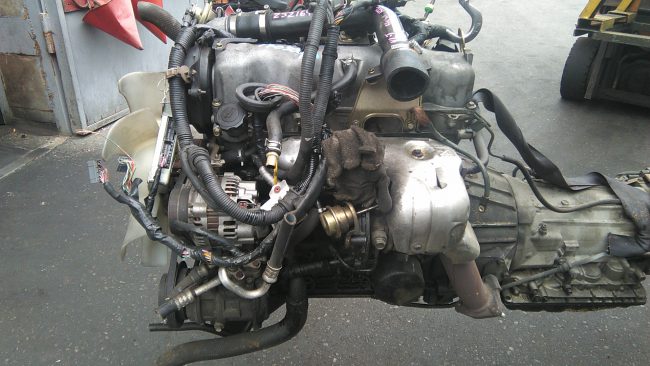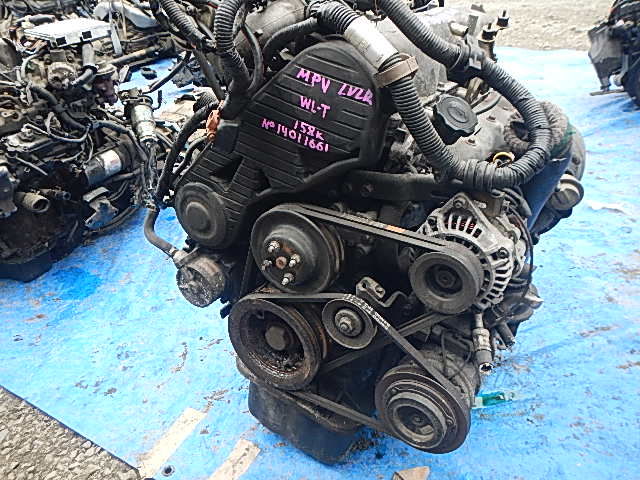
Mazda WL engines
Content
The Japanese automotive industry has brought to light a lot of high-quality units, which hardly anyone can argue with. The well-known manufacturer Mazda has made a significant contribution to the formation of Japan as one of the centers for the production of cars and components for them.
For almost 100 years of history, this automaker has designed a lot of high-quality, reliable and functional products. If car models from Mazda are known everywhere, then the manufacturer's engines are poorly popularized. Today we’ll talk about a whole line of Mazda diesels called WL. Read about the concept, technical features and history of these engines below.
A few words about the ICE line
The range of units marked "WL" from Mazda are typical diesel engines used to equip large vehicles. These engines were installed only in the model of the automaker itself. The main ones were minivans and SUVs, but limited series "WL" engines are also found in some minibuses and pickups. Distinctive features of these units are considered to be good traction with relatively low power.
The WL range includes two basic motors:
- WL - diesel aspirated with 90-100 horsepower and 2,5-liter volume.
- WL-T is a turbocharged diesel engine with up to 130 horsepower and the same 2,5 liters of volume.
 In addition to the noted variations, from the WL you can find the WL-C and WL-U units. These engines were also produced in atmospheric, turbocharged variations. Their feature is the type of exhaust system used. WL-C - engines for models sold in the USA and Europe, WL-U - engines for Japanese roads. In terms of design and power, these WL engine variations are completely identical to ordinary aspirated and turbodiesel engines. All installations were made from 1994 to 2011.
In addition to the noted variations, from the WL you can find the WL-C and WL-U units. These engines were also produced in atmospheric, turbocharged variations. Their feature is the type of exhaust system used. WL-C - engines for models sold in the USA and Europe, WL-U - engines for Japanese roads. In terms of design and power, these WL engine variations are completely identical to ordinary aspirated and turbodiesel engines. All installations were made from 1994 to 2011.
Representatives of the engine range under consideration are built in a typical way for power plants of the 90s and 00s. They have an in-line design, 4 cylinders and 8 or 16 valves. Power is typical for a diesel engine, and is represented by an electronically controlled injector with high pressure fuel pump.
The gas distribution system is built on the basis of SOHC or DOHC technologies, and the turbine is Common Rail from Bosch with variable blade geometry. Timing chain drive, aluminum structure. It is worth noting that the turbocharged WL samples have a reinforced CPG and a slightly improved cooling system. In all other respects, except for power, the turbodiesels of the line are no different from aspirated engines.
Technical characteristics of WL and the list of models equipped with them
| Manufacturer | Mazda |
| Motor brand | WL (WL-C, WL-U) |
| Type | atmospheric |
| Years of production | 1994-2011 |
| Cylinder head | aluminum |
| Food | diesel injector with injection pump |
| Construction scheme | in-line |
| No. of cylinders (valves per cylinder) | 4 (2 or 4) |
| The piston stroke, mm | 90 |
| Cylinder diameter, mm | 91 |
| Compression ratio, bar | 18 |
| Engine displacement, cubic meters cm | 2499 |
| Power, HP | 90 |
| Torque, Nm | 245 |
| Fuel | DT |
| Environmental standards | EURO-3, EURO-4 |
| Fuel consumption per 100 km of track | |
| - in the city | 13 |
| - along the track | 7.8 |
| - in mixed driving mode | 9.5 |
| Oil consumption, grams per 1000 km | to 800 |
| Type of lubricant used | 10W-40 and analogues |
| Oil change frequency, km | 10 000-15 000 |
| Engine resource, km | 500000 |
| Modernization options | available, potential - 130 hp |
| Serial number location | the rear of the engine block on the left, not far from its connection with the gearbox |
| Equipped models | Mazda Bongo Friendee Mazda Efini MPV Mazda MPV Mazda Proceed |
| Manufacturer | Mazda |
| Motor brand | WL-T (WL-C, WL-U) |
| Type | turbocharged |
| Years of production | 1994-2011 |
| Cylinder head | aluminum |
| Food | diesel injector with injection pump |
| Construction scheme | in-line |
| No. of cylinders (valves per cylinder) | 4 (2 or 4) |
| The piston stroke, mm | 92 |
| Cylinder diameter, mm | 93 |
| Compression ratio, bar | 20 |
| Engine displacement, cubic meters cm | 2499 |
| Power, HP | 130 |
| Torque, Nm | 294 |
| Fuel | DT |
| Environmental standards | EURO-3, EURO-4 |
| Fuel consumption per 100 km of track | |
| - in the city | 13.5 |
| - along the track | 8.1 |
| - in mixed driving mode | 10.5 |
| Oil consumption, grams per 1000 km | to 1 000 |
| Type of lubricant used | 10W-40 and analogues |
| Oil change frequency, km | 10 000-15 000 |
| Engine resource, km | 500000 |
| Modernization options | available, potential - 180 hp |
| Serial number location | the rear of the engine block on the left, not far from its connection with the gearbox |
| Equipped models | Mazda Bongo Friendee Mazda Efini MPV Mazda MPV Mazda Proceed Mazda B-series Mazda BT-50 |
Note! The differences between the atmospheric and turbocharged variations of the WL engines are only in their power. Structurally, all motors are identical. Naturally, in a turbocharged engine model, some nodes are slightly reinforced, but the general concept of construction has not been changed.
Repair and service
The "WL" engine range is quite reliable for diesels. Judging by the reviews of their operators, the motors do not have typical malfunctions. With timely and high-quality maintenance, breakdowns of any WL are a rarity. Most often, it is not the nodes of the unit itself that suffer, but:
- Supply system.
- Oil supply.
- Cooling.
In the event of a malfunction of an atmospheric or turbocharged WL, it is advisable not to engage in independent repairs, since their design is specific. You can repair these engines at any specialized Mazda service station or other high-quality stations. The cost of repairs is low and equals the average service figures for similar diesel engines.


Watch this video on YouTube
As for WL tuning, motor owners rarely resort to it. As noted earlier, they have good traction, are installed in large vehicles and are ordinary "hard workers". Of course, there is a potential for modernization, but often it simply does not require implementation. If desired, about 120-130 horsepower can be squeezed out of the WL aspirated, 180 horsepower from the turbodiesel of the line. Decide for yourself whether it is worth spending money on such tuning or not.

